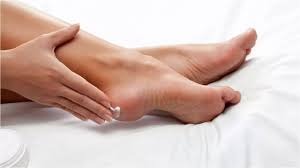Why are non-invasive diagnostic instruments so important these days?
Imagine being able to get a complete body report by just scanning the surface of the skin. It seems futuristic that you may get information on the makeup of different vitamins and minerals in the body and that you don’t have to endure excruciating needle piercings.

We now need non-invasive diagnostic technologies.
In order to handle a variety of issues and satisfy the changing demands of patients and healthcare professionals, non-invasive diagnostic instruments have grown in importance in today’s healthcare system.
The use of intrusive techniques like surgery or tissue biopsies, which may be unpleasant and painful and have a higher risk of consequences like bleeding or infection, is avoided when non-invasive diagnostic technologies are available. Non-invasive diagnostic techniques enhance patient satisfaction by putting the comfort and safety of the patient first, leading to a better overall healthcare experience.
Risks associated with invasive diagnostic procedures include bleeding, infection, and harm to nearby tissues or organs. Non-invasive medical devices, such as MRIs, CT scans, and ultrasounds, reduce these dangers by providing comprehensive diagnostic data without requiring tissue samples or surgical incisions. This improves patient outcomes by lowering the chance of problems.
Healthcare professionals may make prompt and well-informed judgments on patient treatment because of the quick findings that non-invasive diagnostic technologies often provide. Healthcare providers may more effectively monitor patient progress, diagnose underlying disorders, and start appropriate therapies using non-invasive techniques like imaging or blood testing, which eventually improves patient outcomes and survival rates.
Patients may experience severe physical pain and psychological suffering as a result of invasive diagnostic techniques, such as the oligoscan utilized by The Wellness Co., which may make them fearful and reluctant to seek medical attention. Non-invasive diagnostic instruments provide a more relaxed and unthreatening substitute, reducing patient apprehension and encouraging more compliance with suggested screening and diagnostic procedures.
Non-invasive diagnostic techniques, such as imaging or biomarker testing, are readily repeatable over time to track the course of a disease, how well a therapy is working, or how successful an intervention is. This eliminates the need to repeatedly submit patients to invasive operations and enables healthcare practitioners to monitor changes in the health state of their patients, modify treatment regimens as necessary, and maximize long-term results.
Particularly in isolated or underdeveloped locations where access to specialist medical facilities may be restricted, non-invasive diagnostic technologies are often more widely available and more accessible than invasive treatments. Point-of-care ultrasonography and portable diagnostic equipment are examples of technologies that improve healthcare access and equality by enabling healthcare practitioners to do non-invasive evaluations in a variety of venues, such as clinics, community health centers, or even patients’ homes.
Non-invasive diagnostic technologies are essential for early illness identification and preventative screening because they enable medical professionals to find risk factors, spot anomalies, and take action before problems worsen. Non-invasive techniques have the potential to save lives, greatly enhance patient outcomes, and lower treatment costs by enabling early diagnosis and intervention.
The development of precision diagnostics and customized medicine is aided by non-invasive diagnostic techniques, which enable medical professionals to customize interventions and treatments based on the unique requirements, preferences, and characteristics of each patient. Non-invasive approaches optimize treatment results and minimize side effects by providing comprehensive information on each patient’s individual physiology, genetics, and illness profile. This allows for more tailored and successful therapies.







